List of Nobel laureates affiliated with the University of Tokyo
Eleven Nobel laureates have been affiliated with the University of Tokyo. The building pictured is Yasuda Auditorium.
The Nobel Prizes are awarded annually by the Royal Swedish Academy of Sciences, the Karolinska Institute, and the Norwegian Nobel Committee to individuals who make outstanding contributions in the fields of chemistry, physics, literature, peace, and physiology or medicine.[1] As of 2018, 16 Nobel laureates (including 9 alumni) have been associated with the University of Tokyo.
Summary
| Category | Official Count | Others with UTokyo related | Total | Remarks |
|---|---|---|---|---|
| Physics | 4 | 3 | 7 | |
| Chemistry | 1 | - | 1 | |
| Physiology or Medicine | 1 | 2 | 3 | |
| Literature | 2 | - | 2 | Yasunari Kawabata is also the first Japanese Nobel laureate in Literature |
| Peace | 1 | - | 1 | |
| Economic Sciences | - | 2 | 2 | |
| Total | 9 | 7 | 16 |
Laureates
The following 9 Nobel laureates from the official list of the University of Tokyo,[2] they are all alumni too.
| Year | Image | Laureate | Relation | Category | Rationale |
|---|---|---|---|---|---|
| 1968 | 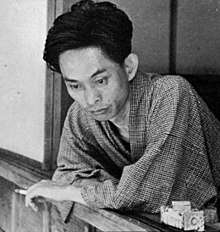 |
Yasunari Kawabata | Alumnus | Literature | "for his narrative mastery, which with great sensibility expresses the essence of the Japanese mind".[3] |
| 1973 |  |
Leo Esaki | Alumnus; Ph.D. | Physics | "for their experimental discoveries regarding tunneling phenomena in semiconductors and superconductors, respectively" – shared with Ivar Giaever and Brian Josephson.[4] |
| 1974 | 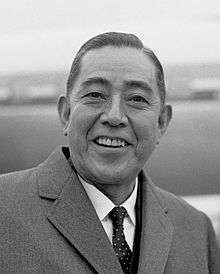 |
Eisaku Satō | Alumnus | Peace | "Prime Minister of Japan,"[5] "for his renunciation of the nuclear option for Japan and his efforts to further regional reconciliation" – shared with Seán MacBride.[6] |
| 1994 | 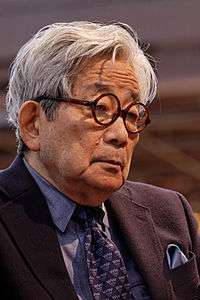 |
Kenzaburō Ōe | Alumnus | Literature | "who with poetic force creates an imagined world, where life and myth condense to form a disconcerting picture of the human predicament today".[7] |
| 2002 | 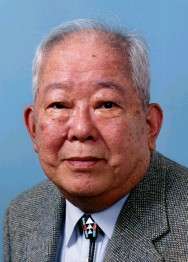 |
Masatoshi Koshiba | Alumnus; Ph.D. graduate Faculty (1963-); honorary professor |
Physics | "for pioneering contributions to astrophysics, in particular for the detection of cosmic neutrinos" – shared with Raymond Davis Jr. and Riccardo Giacconi.[8] |
| 2008 |  |
Yoichiro Nambu | Alumnus; Ph.D. | Physics | "for the discovery of the mechanism of spontaneous broken symmetry in subatomic physics" – shared with Makoto Kobayashi and Toshihide Maskawa.[9] |
| 2010 | 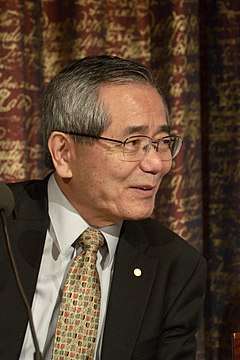 |
Ei-ichi Negishi | Alumnus | Chemistry | "for palladium-catalyzed cross couplings in organic synthesis" – shared with Richard F. Heck and Akira Suzuki.[10] |
| 2015 | 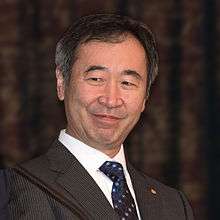 |
Takaaki Kajita | Ph.D. graduate Faculty (1988-); honorary professor |
Physics | "for the discovery of neutrino oscillations, which shows that neutrinos have mass" – shared with Arthur B. McDonald.[11] |
| 2016 | .jpg) |
Yoshinori Ohsumi | Alumnus; Ph.D. graduate Faculty (1977-1996) |
Physiology or Medicine | "for his discoveries of mechanisms for autophagy".[12] |
Laureates with UTokyo related
| Year | Image | Laureate | Relation | Category | Rationale |
|---|---|---|---|---|---|
| 1964 | 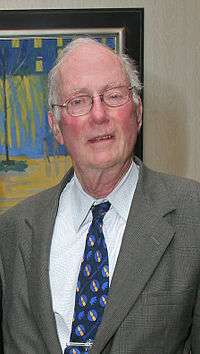 |
Charles H. Townes | Visit scholar | Physics | "for fundamental work in the field of quantum electronics, which has led to the construction of oscillators and amplifiers based on the maser–laser principle" – shared with Nicolay Gennadiyevich Basov and Alexander Prokhorov.[13] |
| 1965 | 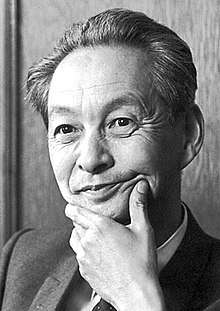 |
Sin-Itiro Tomonaga | Dissertation Ph.D. | Physics | "for their fundamental work in quantum electrodynamics, with deep-ploughing consequences for the physics of elementary particles" – shared with Julian Schwinger and Richard Feynman.[14] |
| 1990 | Harry Markowitz | Visit professor | Economic Sciences | "for their pioneering work in the theory of financial economics"– shared with Merton Miller and William F. Sharpe[15] | |
| 2003 | 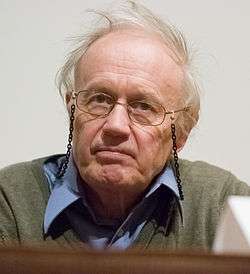 |
Anthony James Leggett | Visit professor | Physics | "for pioneering contributions to the theory of superconductors and superfluids" – shared with Alexei Alexeyevich Abrikosov and Vitaly Lazarevich Ginzburg.[16] |
| 2007 | 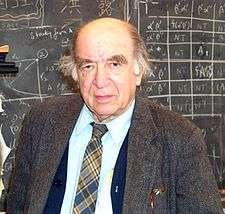 |
Leonid Hurwicz | Visit professor | Economic Sciences | "for having laid the foundations of mechanism design theory" – shared with Eric S. Maskin and Roger B. Myerson.[17] |
| 2015 | 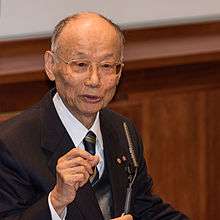 |
Satoshi Ōmura | Dissertation Ph.D. | Physiology or Medicine | "for their discoveries concerning a novel therapy against infections caused by roundworm parasitess" – shared with William C. Campbell and Youyou Tu.[18] |
| 2018 |  |
Tasuku Honjo | Assistant professor (1974-1979) | Physiology or Medicine | "for their discovery of cancer therapy by inhibition of negative immune regulation" – shared with James P. Allison.[19] |
See also
References
- ↑ "Alfred Nobel – The Man Behind the Nobel Prize". Nobel Foundation. Retrieved 2008-10-18.
- ↑ UTokyo by the Numbers | The University of Tokyo
- ↑ "The Nobel Prize in Literature 1981". Nobel Foundation. Retrieved 24 January 2017.
- ↑ "The Nobel Prize in Physics 1973". Nobel Foundation. Retrieved 24 January 2017.
- ↑ "Eisaku Sato - Facts". Nobel Foundation. Retrieved 24 January 2017.
- ↑ Lundestad, Geir (2001-03-15). "The Nobel Peace Prize, 1901–2000". Nobel Foundation. Retrieved 2011-10-06.
- ↑ "The Nobel Prize in Literature 1994". Nobel Foundation. Retrieved 24 January 2017.
- ↑ "The Nobel Prize in Physics 2002". Nobel Foundation. Retrieved 24 January 2017.
- ↑ "The Nobel Prize in Physics 2008". Nobel Foundation. Retrieved 24 January 2017.
- ↑ "The Nobel Prize in Chemistry 2010". Nobel Foundation. Retrieved 24 January 2017.
- ↑ "The Nobel Prize in Physics 2015". Nobel Foundation. Retrieved 24 January 2017.
- ↑ "The Nobel Prize in Physiology or Medicine 2016". Nobel Foundation. Retrieved 24 January 2017.
- ↑ "The Nobel Prize in Physics 1964". Nobel Foundation. Retrieved 9 October 2008.
- ↑ "The Nobel Prize in Physics 1965". Nobel Foundation. Retrieved 19 December 2009.
- ↑ "The Sveriges Riksbank Prize in Economic Sciences in Memory of Alfred Nobel 1991". Nobel Foundation. Retrieved 2008-10-14.
- ↑ "The Nobel Prize in Physics 2003". Nobel Foundation. Retrieved 1 October 2018.
- ↑ "The Sveriges Riksbank Prize in Economic Sciences in Memory of Alfred Nobel 2007". Nobel Foundation. Retrieved 2008-10-14.
- ↑ "The Nobel Prize in Physiology or Medicine 2015". Nobel Foundation. Retrieved 24 January 2017.
- ↑ "The Nobel Prize in Physiology or Medicine 2018". Nobel Foundation. Retrieved 2018-10-01.
External links
This article is issued from
Wikipedia.
The text is licensed under Creative Commons - Attribution - Sharealike.
Additional terms may apply for the media files.